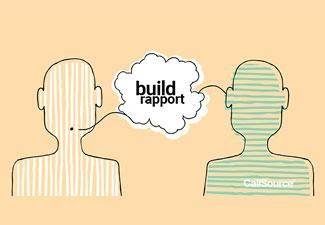In today’s fast-paced business world, the mere mention of cold calling can send shivers down the spine of even the most seasoned Sales Development Representatives (SDRs).
But what if I told you that with the right script in hand, cold calls don’t have to feel like an uphill battle?
Instead, they can become a bridge to meaningful conversations and fruitful relationships.
In this article, we’ll dive into some of the most impactful cold calling scripts tailored specifically for SDRs, drawing from expert insights to help you resonate with prospects and elevate your sales game. You’ll discover that cold calling is not just about selling; it’s about creating connections.
So, let’s warm up those calls and get ready to boost your confidence and conversion rates!
To kick things off, check out some proven templates and tips that can make all the difference in your calling strategy, as explored by leaders in the field.
Table of Contents
ToggleUnderstanding Your Audience for Maximum Impact
Once you have gathered enough information, segment your audience based on common characteristics.
Create detailed buyer personas to represent different segments. Buyer personas should include crucial information such as:
- Age and gender
- Job title and industry
- Pain points and challenges
- Preferred communication style
Tailoring your script to these personas ensures that each call feels personalized and relevant.
For instance, a busy executive might appreciate a direct, concise approach, while a small business owner might favor a more conversational tone. By aligning your message with the audience’s preferences, you increase the chances of engaging them meaningfully.
Additionally, leverage engagement strategies to keep the conversation interactive. Encourage prospects to ask questions and express their views during the call. Focus on listening actively and responding thoughtfully to build rapport and trust.
Techniques like mirroring their language and referencing past interactions can further personalize the experience, making your outreach more effective.
Consider using a simple table to organize your insights on different audience segments, ensuring each segment receives a tailored message:
| Audience Segment | Key Characteristics | Preferred Approach |
|---|---|---|
| Busy Executives | Time-constrained, result-oriented | Direct, concise |
| Small Business Owners | Hands-on, value-driven | Conversational, relationship-focused |
| Tech Enthusiasts | Curious, detail-oriented | Informative, in-depth |
Crafting the Perfect Opening Line
First impressions matter, and the opening line of a cold call sets the tone for the entire conversation.
An effective opener piques interest, establishes rapport, and transitions smoothly into the core of your pitch. Let’s dive into some creative strategies to craft the perfect opening line.
Personalization is Key
Begin by addressing the prospect by their name. This simple gesture immediately signals that this isn’t just another generic sales call. Doing a bit of research beforehand to mention a recent achievement or industry news related to the prospect can create a compelling hook. For example:
“Hi [Prospect’s Name], I noticed your company just launched a new product line. Congratulations! How has the response been so far?”
Establish Credibility
In the first few seconds, it’s crucial to convey who you are and why you’re calling. Mention your name, your role, and very briefly introduce your company. This helps the prospect understand the context of the call and your credibility. Consider structuring it like this:
“Hi [Prospect’s Name], this is [Your Name] from [Your Company]. We specialize in helping businesses like yours streamline their operations.”
Open-Ended Questions
Open-ended questions are an excellent tool to engage the prospect from the get-go. These questions should be relevant to their business challenges and encourage a dialogue. Here are a few examples:
- “I’m curious, what are your top priorities this quarter?”
- “How are you currently managing [specific process]?”
- “What would you say is your biggest challenge with [related topic]?”
To help visualize how these elements come together, here’s a quick comparison of different opening line styles:
| Approach | Example |
|---|---|
| Generic | “Hi, I’m [Your Name] from [Your Company]. Do you have a moment to talk?” |
| Personalized | “Hi [Prospect’s Name], I read your recent article on [topic] – very insightful! How are you addressing [related challenge]?” |
| Engaging | “Hi [Prospect’s Name], this is [Your Name] from [Your Company]. How are you managing [specific process] currently?” |
Remember, the opening line is your ticket to capturing your prospect’s interest and setting the stage for a meaningful conversation. Personalize, establish credibility, and engage with thought-provoking questions for the best results.

Building Rapport Quickly and Effectively
Establishing a genuine connection with prospects during a cold call starts with the initial moments of conversation. Here are some effective strategies to help you build rapport quickly and effectively:
- Personalized Opening: Instead of jumping straight into your pitch, begin with a personalized greeting. Mention common connections or specific insights about the prospect’s company. For instance, “Hi [Prospect’s Name], I noticed your company’s recent expansion into the tech industry. How has that been going?” This approach immediately shows that you’re knowledgeable and have done your homework.
- Empathy and Listening: Practicing active listening is crucial. Show genuine interest in what the prospect is saying. Nodding, paraphrasing their points, and asking follow-up questions demonstrate that you value their input. For example, ”I understand how challenging that can be. Can you tell me more about how you’re currently tackling these issues?”
Another key aspect is addressing potential objections gracefully. When a prospect voices concerns, acknowledge them thoughtfully and provide reassurances. Use phrases like:
- “I completely understand your hesitation.”
- “That’s a valid point, and let me explain how we can address that.”
Here’s a quick comparison of effective responses versus common pitfalls:
| Effective Strategy | Common Pitfall |
|---|---|
| Empathetic responses, addressing concerns with solutions | Dismissing objections or offering generic answers |
| Personalized interaction with specifics about the prospect | Using scripted greetings without customization |
| Active listening, showing genuine interest in the prospect | Rushing through the script without engaging the prospect |
Building rapport is not just about what you say, but how you say it.
Maintain a friendly, conversational tone without sounding robotic. Injecting a bit of personality into your calls helps prospects see you as more than just a salesperson, but as someone they can trust and relate to.
This sets a strong foundation for future interactions, leading to more meaningful connections and, ultimately, better sales outcomes.
Handling Objections Like a Pro
Overcoming objections is a critical skill for successful SDRs, and handling them with finesse can turn a potential rejection into an opportunity.
Here are some techniques to help you handle objections like a pro:
- Active Listening: Before you respond to an objection, ensure you’ve fully understood the prospect’s concern. Listening attentively not only makes the prospect feel heard but also provides you with the necessary context to tailor your response effectively.
- Empathize: Show empathy by acknowledging the prospect’s concern. A statement like “I understand where you’re coming from” can go a long way in building rapport and reducing defensiveness.
- Ask Clarifying Questions: Probe deeper to unearth the root of the objection. Questions such as “Can you tell me more about your budget constraints?” or “What specifically worries you about this solution?” can provide invaluable insights to address their concerns.
One effective way to tackle common objections is to address them proactively in your cold calling script. Here’s an example of how you might structure your response to a budget-related objection:
| Objection | Proactive Response |
|---|---|
| “This is too expensive for us right now.” | “I understand budget constraints are a major concern for many. Could you share more about your budget parameters, so I can tailor a solution that fits? Many of our clients found that the initial investment quickly pays off in increased productivity and savings in other areas.” |
Lastly, maintain a positive attitude throughout the call.
Prospects pick up on your energy, and a positive demeanor can turn the tide in your favor. Always end the conversation on a positive note, regardless of the outcome, by expressing gratitude for their time and offering to provide further information whenever they’re ready.
By mastering these techniques, you’ll find that handling objections becomes a natural part of your success formula.
Using Questions to Steer the Conversation
When making a cold call, skillfully using questions can transform the conversation from an intrusive interruption to an engaging dialogue.
By asking the right questions, you not only gather crucial information but also guide the prospect towards realizing their own needs and how you can fulfill them.
Here are several strategies that can help SDRs effectively steer the conversation with questions.
Open-ended questions are essential for getting the prospect to elaborate on their current challenges and goals. These questions go beyond yes-or-no answers and encourage more detailed responses. For example:
- “Can you tell me more about your current process for [specific task]?”
- “What are the biggest challenges you’re facing with [specific issue]?”
By prompting a prospect to share their experiences, you build a deeper understanding of their situation and demonstrate genuine interest in their needs.
Once you have a grasp of the prospect’s situation, leading questions can subtly guide them to recognize areas where your product or service could provide value. Examples include:
- “How effective has your current solution been in achieving [specific result]?”
- “Have you considered any alternatives to address [specific challenge]?”
These questions help the prospect see the potential shortcomings of their current approach and open the door for your solution as a viable option.
Steering the conversation towards future goals can shift the prospect’s mindset from current struggles to potential improvements. This can effectively position your product as a catalyst for change. Try questions like:
- “Where do you see your company in the next six months regarding [specific goal]?”
- “What impact would overcoming [specific issue] have on your overall business objectives?”
Bringing the future into focus helps the prospect envision the benefits of adopting your solution.
Incorporating a sense of urgency can help move the conversation towards a decision. Time-sensitive questions might include:
- “What timeline are you looking at for implementing a new solution?”
- “How soon do you need to see results in [specific area]?”
These questions not only push the prospect to consider prompt action but also allow you to tailor your follow-up strategies effectively.
Highlighting Value Propositions with Clarity
In the world of cold calling, emphasizing your value propositions with crystal-clear clarity is non-negotiable. When SDRs make calls, they must swiftly communicate the unique benefits that their product or service offers. This clarity sets the stage for a meaningful conversation and piques the interest of potential clients from the get-go.
One of the most effective methods to highlight these value propositions is through hyper-personalization.
By conducting deep research into your prospects’ needs and challenges, you can tailor your value propositions to resonate on a personal level.
Instead of generic statements, offer specific solutions that address their pain points directly, showing that you’ve done your homework and truly understand their business context.
Utilizing open-ended questions can also help in accentuating your value propositions.
Questions like, “What are the biggest challenges you’re facing with your current provider?” or ”How are you handling [specific task] currently?” invite prospects to share their issues and provide an opening for you to seamlessly introduce how your product or service can provide a solution.
This engagement not only builds rapport but naturally guides the conversation towards the benefits you offer.
For a sleek and succinct presentation of value propositions, consider incorporating a table format within your script:
| Challenge | Solution | Benefit |
|---|---|---|
| Inefficient Processes | Automated Workflow | Streamlined Operations |
| Poor Customer Engagement | CRM Integration | Enhanced Customer Relationships |
| High Operational Costs | Cost-Effective Software | Budget-friendly Solutions |
Remember, the key to successful cold calling lies in making your value propositions relatable and easy to understand.
By employing strategies like hyper-personalization, open-ended questioning, and clear tabular presentations, SDRs can ensure they convey their message effectively and seize the opportunity to build strong connections with prospects.
Mastering the Art of Follow-Up Calls
- Recap the Previous Conversation: Begin by acknowledging any prior communications or meetings. This shows the prospect that you are attentive and value their time.
- Offer New Value: Don’t just repeat what you’ve already said. Provide new insights, updates, or solutions that are relevant to their needs. This can reignite their interest and add depth to your relationship.
- Be Concise and Respectful: Time is precious. Frame your call to be direct and to the point. Express your respect for their time and focus on how you can solve their pain points quickly.
Adding a human touch can significantly enhance your approach. Incorporate empathy into your script.
Show genuine interest in their challenges and aspirations.
When a prospect feels heard and understood, they are more likely to engage positively.
| Tip | Action |
|---|---|
| Personalize | Use their name and reference specific details from your previous interactions. |
| Be Solution-Oriented | Match their needs with tailored solutions or case studies. |
| Set Clear Next Steps | Outline potential action points or meetings to move forward. |
Keep experimenting with your follow-up techniques.
Practice makes perfect, and over time, you’ll develop an intuitive sense of how to read your prospects and guide them effectively through the pipeline.
Remember, each call is an opportunity to build a stronger connection and advance the relationship.
Balancing Personalization and Professionalism
Striking the right balance between personalization and professionalism in cold calling scripts can be quite the challenge for SDRs.
While it’s crucial to connect with potential clients on a personal level, maintaining a professional demeanor is equally important. Here are some strategies to achieve this balance effectively:
- Know Your Prospect: Research your prospect prior to calling. Understand their industry, challenges they face, and any mutual connections you might have. Use this information to tailor your conversation.
- Use Their Name and Company: Addressing your prospect by their name and mentioning their company shows that your call is specifically for them, not just a mass outreach.
On the professional side, ensure that your script is clear and straightforward. Avoid jargon and maintain a polite tone throughout. The goal is to be relatable yet authoritative, making the prospect feel valued without coming off as overly familiar.
Here are elements to integrate into your script to maintain professionalism:
| Key Element | Professional Approach |
|---|---|
| Introduction | Clearly state your name, company, and purpose of the call. |
| Agenda | Briefly outline what you plan to discuss and the value for the prospect. |
| Questions | Ask insightful, open-ended questions to understand their needs better. |
Start with a warm introduction by mentioning something relevant to the prospect, such as a recent industry development, then quickly segue into the purpose of your call.
Here’s a pro tip: sprinkle your script with genuine compliments and reflections on the prospect’s achievements, but avoid overdoing it. This keeps the conversation engaging and respectful.
Leveraging Technology to Enhance Your Script
In the ever-evolving landscape of sales, leveraging technology can significantly elevate the performance of your cold calling scripts.
Using Customer Relationship Management (CRM) systems, artificial intelligence (AI), and call analytics can make your outreach efforts more professional, personalized, and effective.
1. CRM Tools
A robust CRM tool allows you to store and analyze customer data effectively.
These systems enable seamless integrating of customer interactions, giving you a comprehensive view of your prospect’s history with your company.
This invaluable information can help you tailor your script to address specific pain points and interests, making your call more relevant and engaging.
Benefits:
- Centralized customer data
- Enhanced relationship tracking
- Personalized script adjustments
2. AI and Machine Learning
Integrating AI into your cold calling strategies can revolutionize how you develop and utilize scripts.
AI tools can analyze vast data sets to identify patterns and predict outcomes, helping you craft scripts that are more likely to resonate with your target audience.
Applications:
- Predictive analytics for prospect behavior
- Automated follow-up reminders
- Real-time script suggestions
3. Call Analytics
Through detailed call analytics, you can gain insights into what’s working and what’s not.
Technologies that record and transcribe calls help you assess the efficiency of your scripts. These insights can inform tweaks and optimizations, ensuring continuous script improvement.
| Feature | Technology | Benefit |
|---|---|---|
| Customer Insights | CRM | Personalized conversations |
| Predictive Analytics | AI | Targeted scripting |
| Performance Tracking | Call Analytics | Script optimization |
4. Automated Dialing Systems
Automated dialing software can drastically reduce the time spent on manual dialing, allowing SDRs to focus more on the quality of each call.
These systems can queue up calls, leaving little to chance and ensuring a streamlined and efficient calling process.
Advantages:
- Increased call volume
- Reduced idle time
- Improved call connect rates
By incorporating these technological tools and systems, SDRs can transform basic cold calling scripts into highly effective strategies that drive significant business results.
Embrace technology to not only enhance your efficiency but also to create a more personalized and data-driven approach to cold calling.
FAQ
Q1: What is the purpose of a cold calling script, and why is it important?
A1: Think of a cold calling script as your trusty map guiding you through the often-treacherous territory of cold outreach! It sets the stage for meaningful conversations with potential clients. A well-crafted script helps you present your product clearly, keeps the call on track, and ensures you address key points without fumbling over your words. Plus, it provides a safety net so you can focus on building rapport rather than worrying about what to say next!
Q2: What are the key components of an effective cold calling script?
A2: Great question! An effective cold calling script includes:
- A Warm Introduction: Start by greeting the prospect with a friendly tone—no robotic scripts here!
- Engaging Hook: Capture their attention within the first few seconds. This could be a thought-provoking question or a relevant fact.
- Benefit-Oriented Pitch: Clearly outline how your product or service can solve a problem or add value to their business—people love hearing how they can benefit!
- Open-Ended Questions: Encourage dialogue by asking questions that invite them to share their needs or challenges.
- Handling Objections: Prepare for common objections by including responses that turn “maybe” into “tell me more.”
- Clear Call to Action: Conclude with a specific next step, whether it’s setting up a meeting, sending more information, or a follow-up call.
Q3: Can you give me an example of a stellar cold calling script?
A3: Absolutely! Here’s a friendly script template to get your creative gears turning:
[Introduction]
You: “Hi [Prospect’s Name], this is [Your Name] from [Your Company]. How’s your day going?”
(Let them respond and build that initial connection!)
[Engaging Hook]
You: “I was just reading about [relevant industry news], and I thought of your company. How are you navigating that trend?”
[Benefit-Oriented Pitch]
You: “We specialize in [solution], and I believe it could help you [specific benefit]. Companies like yours have seen [result], and I’d love to explore how we could do the same for you.”
[Open-Ended Questions]
You: “What challenges are you currently facing in [related area]? I’d love to learn more!”
[Handling Objections]
Prospect: “I’m not looking for a new solution right now.”
You: “I totally understand! Many of our clients felt the same way until they discovered how our service improved their [specific benefit]. Would it be worthwhile to chat about it for just ten minutes?”
[Call to Action]
You: “How about we schedule a quick 15-minute chat next week to dive deeper? What does your calendar look like?”
Q4: How can I personalize my cold calling script for different prospects?
A4: Personalization is music to the ears of any prospect! Start by researching your leads—know their business, industry trends, and even a few of their challenges. Incorporate insights into your opening line or pitch to show that you’ve done your homework. For instance, if you know a company is expanding, tailor your script to discuss how your solution can support their growth. Personal touches make your call feel less like a sales pitch and more like a helpful conversation among friends.
Q5: How do I ensure that my cold calling scripts remain flexible?
A5: Think of your script as a framework rather than a rigid set of instructions. While it’s great for guiding your flow, each conversation will be different! Be genuinely curious and ready to adapt based on the prospect’s responses. If they dive into a topic you didn’t expect, don’t be afraid to explore that instead of strictly following your script. The more genuine the conversation, the more likely you are to connect and forge a relationship!
Q6: What’s the best way to practice my cold calling script?
A6: Practice makes perfect! Pair up with a colleague for role-playing sessions or even record yourself to analyze your tone and pacing. Try rehearsing in front of a mirror to see how your body language aligns with your words. The goal is to feel comfortable and confident, so your warmth shines through. Remember, the more natural you sound, the more engaged your prospects will be!
To Wrap It Up
As we wrap up our exploration of effective cold calling scripts for SDRs, remember that each call is more than just a connection—it’s an opportunity to build relationships, solve problems, and create value.
Just like a skilled chef experimenting with flavors, don’t hesitate to adapt and personalize these scripts to make them your own. The key is to listen more than you speak and approach each conversation with genuine curiosity and empathy.
With practice, persistence, and a dash of creativity, you’ll transform what once felt daunting into a delightful dialogue that opens doors to new possibilities.
So, dust off that phone, embrace the journey ahead, and let each call be a stepping stone toward success.
Happy calling, and may your conversations be as vibrant as the goals you aim to achieve!







